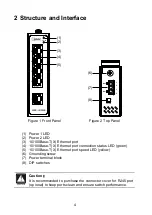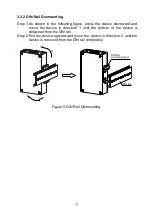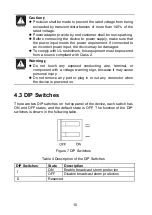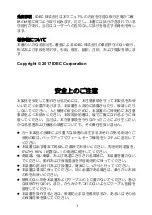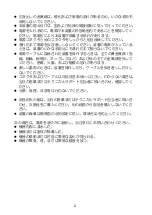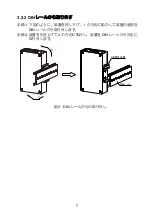
8
4 Connection
4.1 Grounding
Grounding protects the device from lightning and interference. Therefore,
you must ground the device properly. You need to ground the device before
it is powered on and disconnect the grounding cable after the device is
powered off.
There is a grounding screw (see Figure 2) on the top panel of the switch.
The screw is for chassis grounding. After crimping one end of the
grounding cable to a cold pressed terminal, secure the end of the
grounding cable to the grounding screw and firmly connect he other end to
ground.
Note
:
Cross-sectional area of the chassis grounding cable>2.5mm
2
;
Grounding resistance<5
.
4.2 Power Terminal Block
There is a power terminal block on the top panel of the device. You need to
connect the power wires to the terminal block to provide power for he
device. The switch supports redundant power supply with 4-pin
5.08mm-spacing plug-in terminal block. When one power input is faulty, the
switch can continue operating properly, thereby improving network
reliability.
Note
:
Conductor suitable for use in an ambient temperature of 80°C
must be used for the power input terminal.
All field wiring intended for connection to the power terminal
shall consist of copper conductors with the insulation locally
removed. Additional intermediate connecting parts, other than
ferrules, shall not be used.






